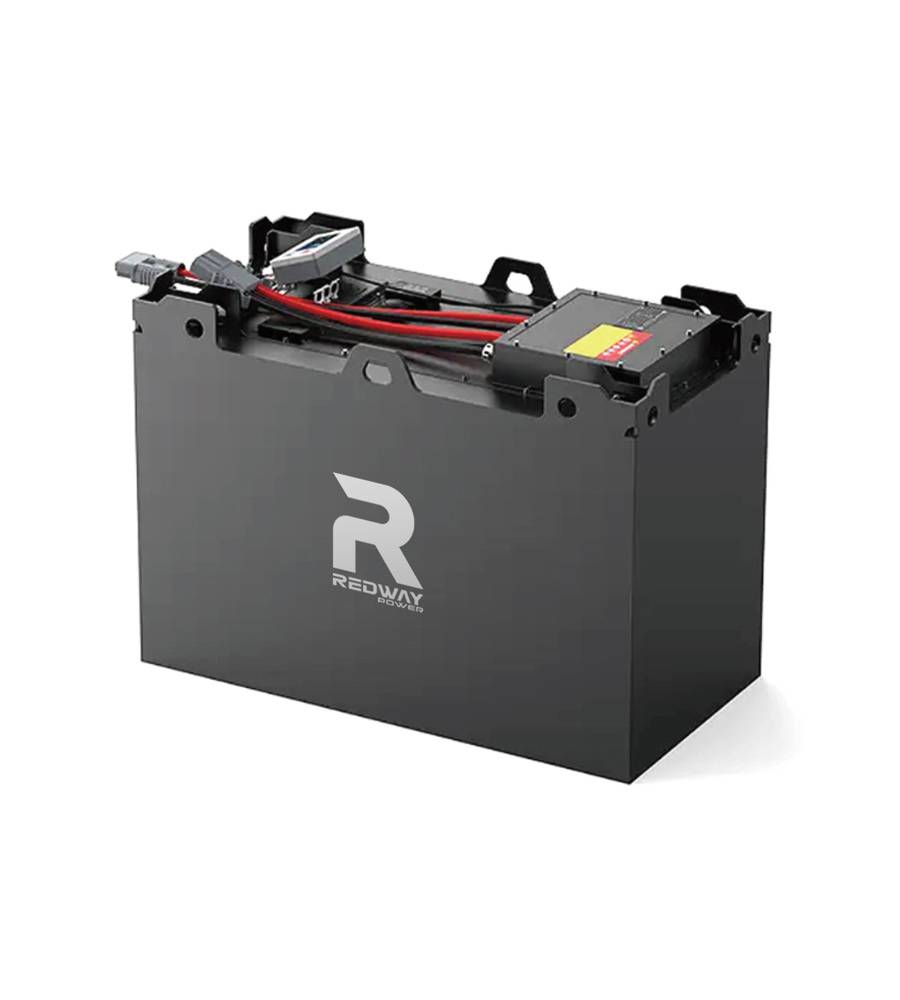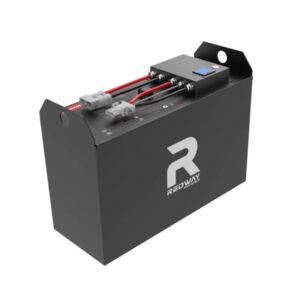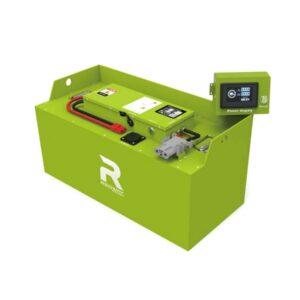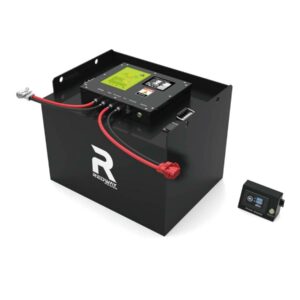Description
Our 48V 460Ah LiFePO4 Forklift Battery redefines industrial energy storage with its high-capacity, long-cycle design. As a leading lithium battery manufacturer, we deliver OEM-ready solutions optimized for durability and performance. Built with advanced LiFePO4 chemistry, this 21.5kWh battery ensures reliability in demanding environments while minimizing downtime and maintenance costs.
Key Features
Unmatched Power Density: With 420Ah capacity and 350A continuous discharge, this lithium battery supports heavy-duty operations without compromising efficiency.
Extended Cycle Life: Engineered for >4,000 cycles at 80% DOD, it outperforms traditional lead-acid alternatives.
Robust Safety: IP65-rated metal casing and smart BMS protect against overcurrent, overtemperature, and short circuits.
Remote Monitoring: Integrated 4G and CAN-bus communication enable real-time tracking of SOC, voltage, and temperature.
Product Description
Designed for OEM integration, this 51.2V lithium battery combines natural cooling and a compact footprint (949*349*569 mm) to fit space-constrained applications. Its wide operating range (-20¡ãC to 60¡ãC) ensures consistent performance in extreme conditions, while the LCD screen provides instant status updates.
Technical Advantages
High Energy Efficiency: LiFePO4 cells achieve 95%+ round-trip efficiency, reducing energy waste.
Rapid Charging: Supports 350A continuous charging for minimal downtime.
Scalable Design: Modular architecture allows customization for varied OEM requirements.
Applications
Ideal for electric forklifts, AGVs, and industrial machinery, this battery is tailored for manufacturers seeking reliable, low-TCO solutions. Its 5-year warranty underscores our commitment to quality as a trusted lithium battery partner.
The 48V 420Ah LiFePO4 forklift battery delivers high-capacity, long-lasting, and safe power tailored for heavy-duty forklifts and material handling equipment. Featuring advanced lithium iron phosphate chemistry, intelligent battery management system (BMS), and rapid charging capabilities, this Heated Battery product ensures extended cycle life, reduced maintenance, and reliable performance in demanding industrial environments.
What Are the Technical Specifications of the 48V 420Ah LiFePO4 Forklift Battery?
The 48V 420Ah LiFePO4 forklift battery has a nominal voltage of 51.2V and a capacity of 420Ah, providing approximately 21.5 kWh of energy. It supports continuous discharge currents up to 400A and peak discharge currents exceeding 1000A for short bursts. The battery weighs around 190-300 kg depending on configuration and measures approximately 950 x 421 x 450 mm. It features a robust metal housing with an IP54 to IP65 rating, ensuring protection against dust and moisture. The integrated BMS manages voltage, current, temperature, and state of charge for optimal safety and longevity.
| Specification | Value |
|---|---|
| Nominal Voltage | 51.2V |
| Capacity | 420Ah |
| Energy | 21.5 kWh |
| Continuous Discharge | Up to 400A |
| Peak Discharge Current | >1000A (short bursts) |
| Weight | 190-300 kg |
| Dimensions (L x W x H) | ~950 x 421 x 450 mm |
| Housing Material | Metal |
| Protection Rating | IP54 – IP65 |
| Cycle Life | >3500 cycles at 70% DOD |
| BMS Current Rating | 400A |
How Does LiFePO4 Chemistry Improve Forklift Battery Performance?
LiFePO4 chemistry offers superior thermal stability, safety, and longevity compared to traditional lead-acid batteries. It provides higher energy density, faster charging, and lighter weight, enabling forklifts to operate longer with less downtime and reduced maintenance.
Why Is the Battery Management System (BMS) Critical for Forklift Batteries?
The BMS continuously monitors cell voltages, current, temperature, and state of charge to prevent overcharging, over-discharging, short circuits, and overheating. It balances cells to maximize battery life and ensures safe, reliable operation in harsh industrial environments.
How Long Does the 48V 420Ah LiFePO4 Forklift Battery Last?
With over 3500 full charge-discharge cycles at 70% depth of discharge, this battery can last 8-10 years or more depending on usage. Its extended lifespan reduces replacement frequency and total cost of ownership compared to lead-acid alternatives.
How Fast Can the 48V 420Ah Battery Be Charged?
The battery supports fast charging, typically fully charging within 2-3 hours depending on charger specifications and current. This rapid charging minimizes forklift downtime and improves operational efficiency.
Which Forklift Models Are Compatible with the 48V 420Ah LiFePO4 Battery?
This battery fits a broad range of 48V forklifts, pallet jacks, electric stackers, and industrial vehicles designed for lead-acid battery replacements. Its modular design and standard connectors facilitate easy retrofit and integration.
How Does the Battery’s Weight and Size Compare to Lead-Acid Alternatives?
Weighing between 190 to 300 kg, the 48V 420Ah LiFePO4 battery is significantly lighter than equivalent lead-acid batteries, improving forklift maneuverability and reducing wear on components. Its compact design optimizes space utilization.
What Safety Features Make LiFePO4 Forklift Batteries Superior?
Beyond the BMS, LiFePO4 chemistry is inherently safer, with no risk of acid leaks or explosions. The battery’s IP54 to IP65 rating protects against dust and water ingress, and the sturdy metal housing withstands industrial impacts.
How Can Users Monitor and Maintain the Battery?
Many Heated Battery LiFePO4 forklift batteries include optional CANBus or RS485 connectivity for real-time monitoring of battery health, charge status, and temperature. Maintenance is minimal, requiring no watering or equalization.
What Environmental Advantages Do LiFePO4 Forklift Batteries Offer?
LiFePO4 batteries are more environmentally friendly than lead-acid batteries due to longer lifespan, higher energy efficiency, and absence of toxic lead or acid. Their recyclability and reduced hazardous waste contribute to sustainable industrial operations.







